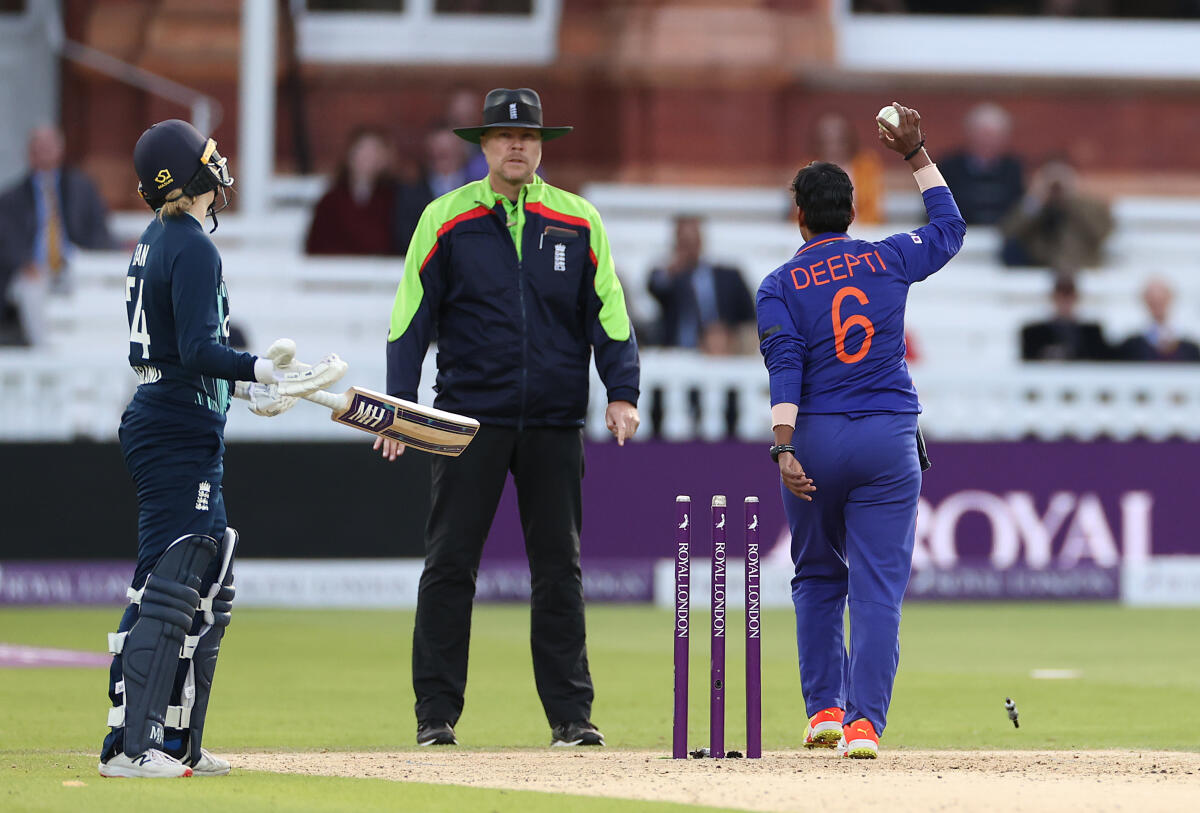According to the ICC rulebook, Deepti Sharma’s run out of Charlie Dean in the third ODI was completely legal, but it didn’t stop many from reacting differently to it.
The Indian women’s team won the three-match series at Lord’s and bid farewell to Jhulan Goswami on Saturday.
Deepti, a spinner, ran out Charlie Dean after the batter had backed up to secure England’s final wicket, sparking a discussion.
Also read: Deepti Sharma’s ‘Mankad’ dismissal of Charlie Dean: All about the controversy
Dean was backing up when Sharma stopped mid-bowl to run out the batter for 47 runs with the target just 17 runs away. The dismissal complies with all of the game’s regulations.
What is Mankading?
The term comes from the legendary Indian all-rounder Vinoo Mankad, who in 1947’s Sydney Test memorably used this technique to run out Australia’s Bill Brown.
What did the old laws say?
The Laws of Cricket made it quite apparent when to run the non-striker out. Even Don Bradman, the captain of that Australian squad in 1947, claimed that the “Mankad” was entirely fair and legal conduct.
The non-striker is liable to be run out if they are out of their ground at any point between when the ball enters play and when the bowler would typically have been expected to release the ball, according to Law 41.16, which deals with the “non-striker leaving his/her ground early.”
Also read: Jhulan Goswami retirement: Career in numbers
What were the various changes to the law?
Over time, the Mankad rule has undergone revisions and had its language altered by the Marylebone Cricket Club (MCC), the guardian of the Laws.
In a bid to place the “onus on the non-striker to remain in their ground,” the phrase “Bowler attempting to run out non-striker before delivery” was changed to “Non-striker leaving their ground early” in the 2017 Code.
To emphasise this further, the MCC slightly changed Law 41.16 once more on April 1, 2019, to read “the non-striker is liable to be run out” instead of “the bowler is permitted to run [the non-striker] out.”
2017 saw another significant modification to the legislation. Prior to this change, the bowler could only run out a non-striker who was backing up before starting his delivery stride.
Also read: Jhulan Goswami retirement: 5 best bowling performances
“This meant that as the bowler’s back foot landed, the non-striker could move down the wicket a considerable way before the bowler actually delivered the ball. This was considered unfair,” the International Cricket Council’s (ICC’s) interpretation of the Laws is noted in the Match Officials’ Almanac 2017–18.
The batsman could be run out by the bowler “at any point before he releases the ball provided he has not completed his delivery swing,” according to the revised rules of the game.
What is the current Mankading law?
In its most recent law changes, which took effect in October 2021, MCC has taken steps to de-stigmatize non-striker run-outs.
MCC Law 41.16.1 states, “If the non-striker is out of his/her ground at any time from the moment the ball comes into play until the instant when the bowler would normally have been expected to release the ball, the non-striker is liable to be Run out. In these circumstances, the non-striker will be out Run out if he/she is out of his/her ground when his/her wicket is put down by the bowler throwing the ball at the stumps or by the bowler’s hand holding the ball, whether or not the ball is subsequently delivered.”







